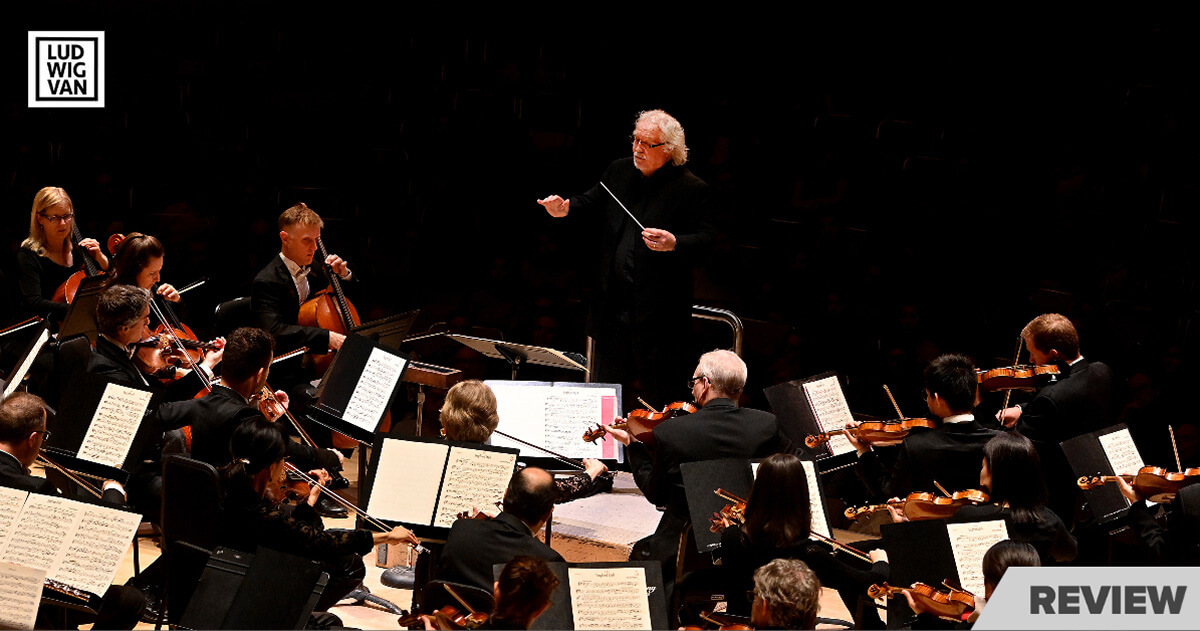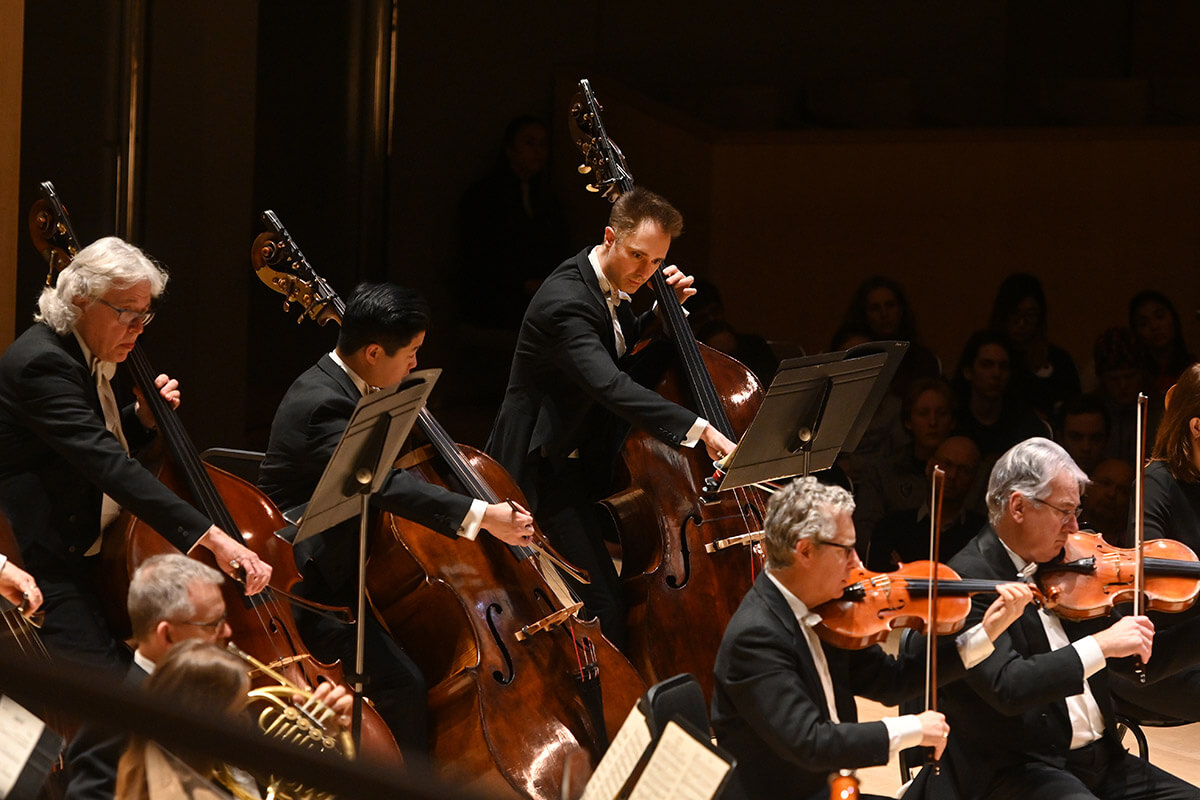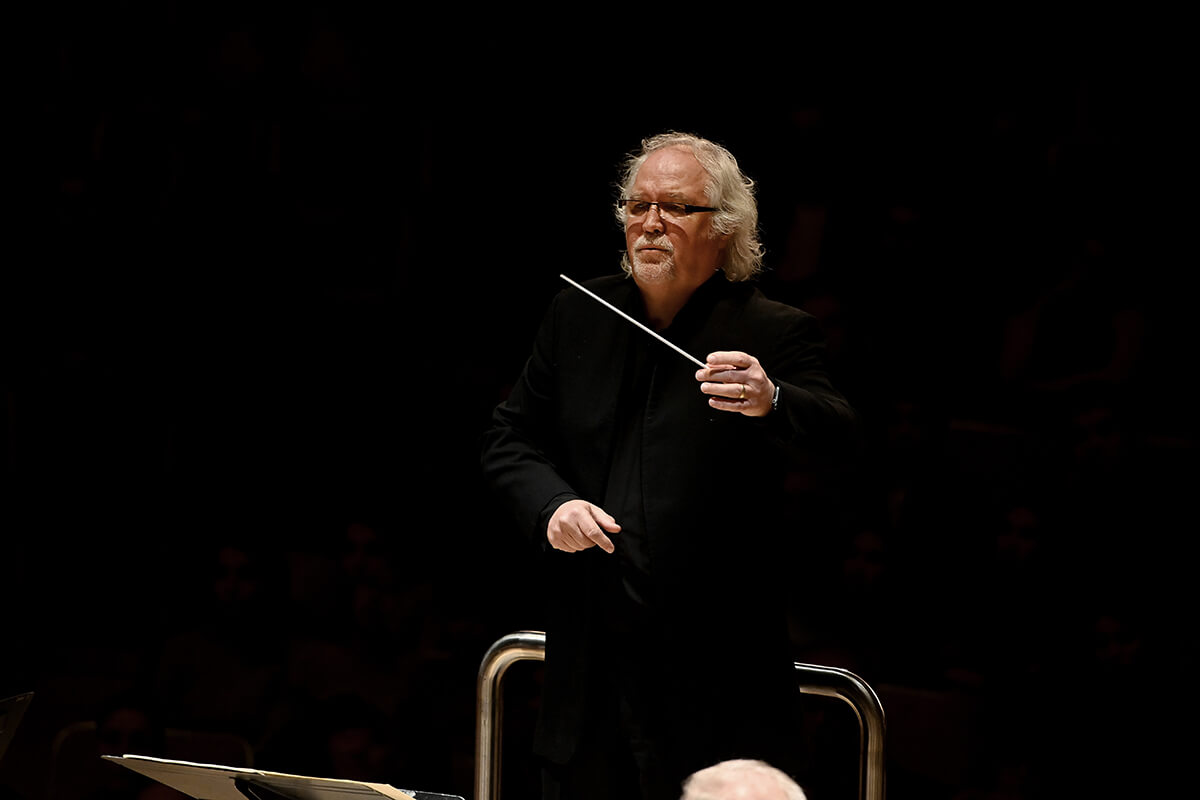
The Toronto Symphony Orchestra with Donald Runnicles (conductor) and Joseph Johnson on cello. Saturday, Feb. 22 at Roy Thomson Hall.
On evenings such as this, where the TSO advertises a concert as “Majestic Bruckner,” I’m not sure what to expect.
Showcasing the Seventh Symphony, the late Romantic composer’s most popular in the genre, both in his lifetime and even today, is certainly common enough, but beyond the word “majestic” I tend to think of Bruckner as being so much more, bordering well onto the indescribable.
Many of us who advocate for Bruckner, not only because of his symphonies but the whole stretch of repertoire he left behind, think of him as forward-looking, building on conservative elements to novel ends, especially in the second half of his career. Wagner named him his favourite contemporary of symphonic music (Wagner’s antipathy for Brahms was well-known), and as is appropriate, his Siegfried Idyll, a musical gift to his wife Cosima, was included as a twenty-minute first-half prelude to the main event.
And conductor Donald Runnicles was back again after his remarkable, no-nonsense Brahms Third Symphony last fall when he shook off all twentieth-century pretensions to fetid excess and delivered a tapered interpretation of more contemporary designs. I was grateful to hear it and his Bruckner Symphony No. 7 was likewise memorable on many levels, justifiably for his balanced approach between structure and lyricism, embracing yet another contemporary path forward.
Bruckner symphonies are their own unique sub-genre — expansive, eventually moving away from conventional sonata form, yet seeking a musical space more comfortable with broad resonances extracted from motivic ideas and their processes and less so pre-occupied with when this motive or that returns and what key it ought to be in (i.e, the earlier Romantics).
Later Bruckner symphonic works move more like large ocean waves over you than descriptive thematic ideas. The result is a very different listening experience that demands broader attention to overall dynamic flow. The listener finds coherence not in structure, but in sonic effects — tremolo in strings, brash brass interruptions like all organ stops suddenly pulled out, lyrical arcs, themes cast in an easy counterpoint and engaging rhythms. Yes, they’re long pieces, but after the Fourth, Bruckner’s symphonies grew even more independent in thought and conceptual complexity.

The TSO had much of this down well, right from the beginning of the lyrical, serene opening theme, the cellos, as always, gifting the audience with consummate tone. The movement becomes a massive arch built out of three themes, played in variations right-side-up and upside down. The movement was given a broadly impressive performance, with each idea growing inside its own dedicated sonic space and allowed to expand organically, interval by interval and theme by theme. It was more difficult to feel the coherence of the first movement in its entirety, even though the intensity of its themes and transparency of how its ideas were manipulated was always there for the listener. Runnicles made Bruckner easy to follow and presented him as a friendly encounter to an appreciative audience.
But the TSO’s handling of the legendary slow movement, a hymn to Wagner written a month before his passing, was the highlight of the night. Here the TSO had everything in order: bright dynamics of timpani, brass and winds, all perfectly balanced, the strings in forceful elocution of the sad C-sharp minor Adagio theme. Best of all was Bruckner’s dedicated handling of the Wagner tubas set as mourning quartet.
The movement also derives one of its themes from an earlier Te Deum by Bruckner, a hymn of praise, now recast as a dedicatory motive of hero-worship written on the eve of Wagner’s death. Even more satisfying was the TSO’s gradual building of power into a climactic arch into C major, a key as far as one could imagine from the movement”s home, as a kind of testimonial to Wagner as though he were made into iconic immortality by Bruckner’s religious sentiment. Here, the brass were blended to perfection and the strings formed a powerful halo effect around the massive texture that the acoustic sustained with a rare completeness. I wished for more of these moments throughout Saturday evening’s performance.
The third movement Scherzo took us back to Austrian dance, its bright octave trumpet theme a signature idea of the entire symphony. People toe-tapped and hand-moved to this famous piece. It’s irresistible, and even if Roy Thomson Hall has banned tapping, moving one’s hand, foot or head in time to music or even leaning forward to take in the experience more intently (ushers are often observed strictly enforcing this policy), listeners were easily seen to be physically involved and engaged with this movement from edgy Scherzo to tranquil Trio.
Strings were melodious, blended and powerful throughout, but sometimes the brass seemed distanced from the texture as a whole, as if they needed to be stationed on higher risers or a little closer to the orchestra. Again, these are concerns with the hall and not the TSO. Sections were remarkable all night long in this epic symphony, but often there were pockets of murky blendedness I wished hadn’t been there. It was the same for the finale as well, with its entertaining variation on the first movement’s opening theme. Beautiful, fun, even idiosyncratic, it was occasionally difficult to hear all the sections blended to perfection.

Regardless, Runnicles makes the TSO deliver a lot of personality throughout the quicker and somewhat capricious thematic transformations, navigating a lot of territory from the lighthearted to the grandiose. It all serves to set up the glorious ending, a rich palette of colour cast in spellbinding undulations, carrying away the audience with a feeling of an epic journey finishing before one expects it to.
But through it all, there were times I wished I were hearing it in a different space, or that conductors in future would take a few more chances with the TSO in where they place sections within the orchestra so that the strings could be heard when they are playing at full power without the rest of the orchestra inadvertently — and never by design — squashing their fine work. It is not a matter of asking this section or that section to play with greater or less power, better-calibrated blend or timbre. The TSO already does this with great expertise.
The issue is that these later Romantic works tend to lose something in Roy Thomson Hall because the sound combines poorly at certain spatial points within the acoustic and we lose something of what a composer is trying to tell us. And unfortunately, there were several points throughout the performance of Bruckner’s Seventh where this happened.
The evening opened with Wagner’s Siegfried Idyll, given a serene and perfectly paired treatment with the Bruckner, a “portal” as Runnicles called it during his introductory comments from the podium before issuing its first familiar strains over the audience.
It’s a favourite and largely set the mood for an evening many in the audience had come expecting to enjoy. In the end, many didn’t go away disappointed with the TSO’s majestic account of late German Romantic music, in spite of an uncooperative acoustic.
#LUDWIGVAN
Want more updates on classical music and opera news and reviews? Follow us on Facebook, Instagram or Twitter for all the latest.
- SCRUTINY | Opera Atelier’s Film Of Handel’s ‘The Resurrection’ A Stylish And Dramatic Triumph - May 28, 2021
- HOT TAKE | James Ehnes And Stewart Goodyear Set The Virtual Standard For Beethoven 250 - December 15, 2020
- SCRUTINY | Against the Grain’s ‘Messiah/Complex’ Finds A Radical Strength - December 14, 2020



